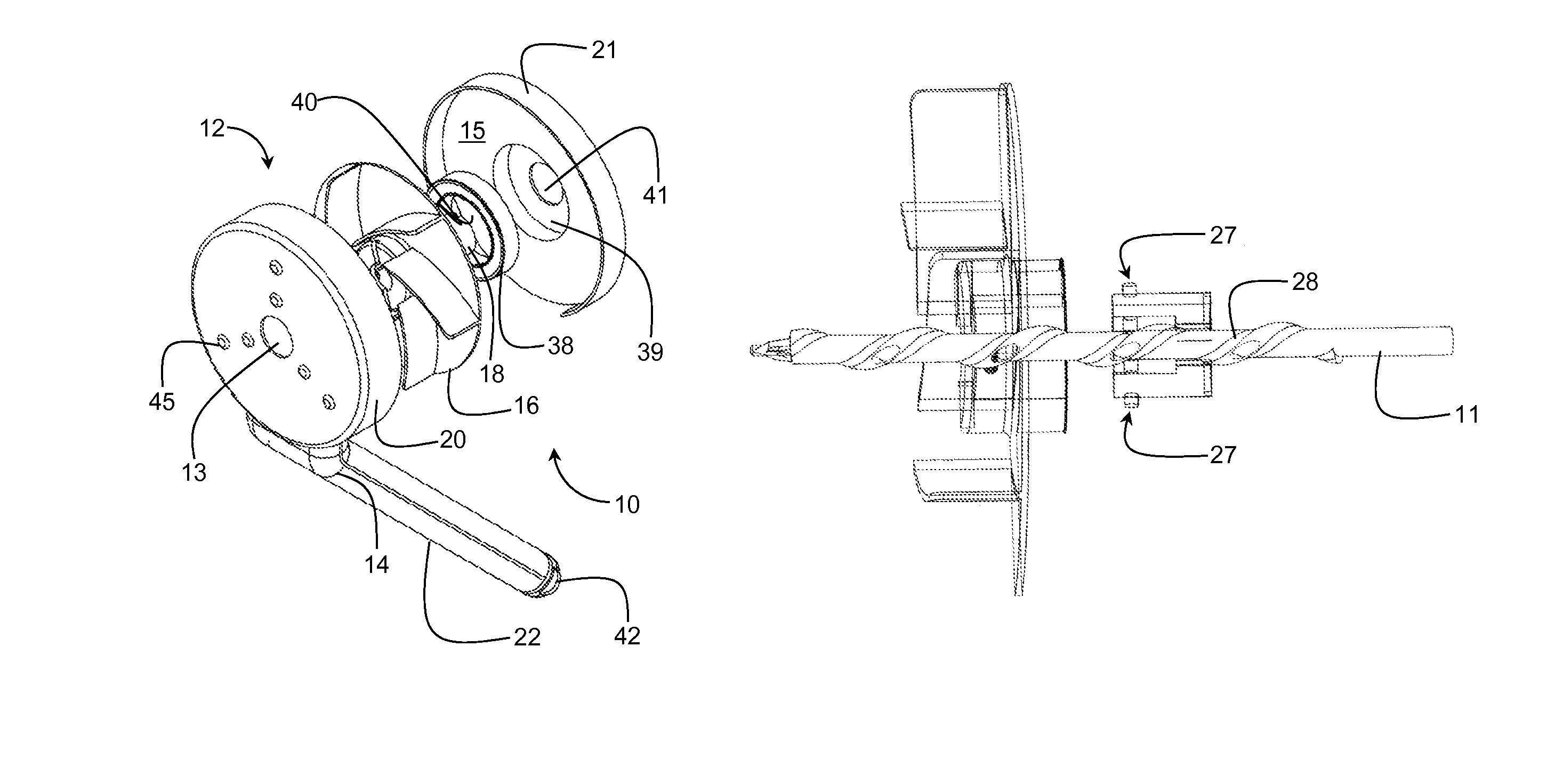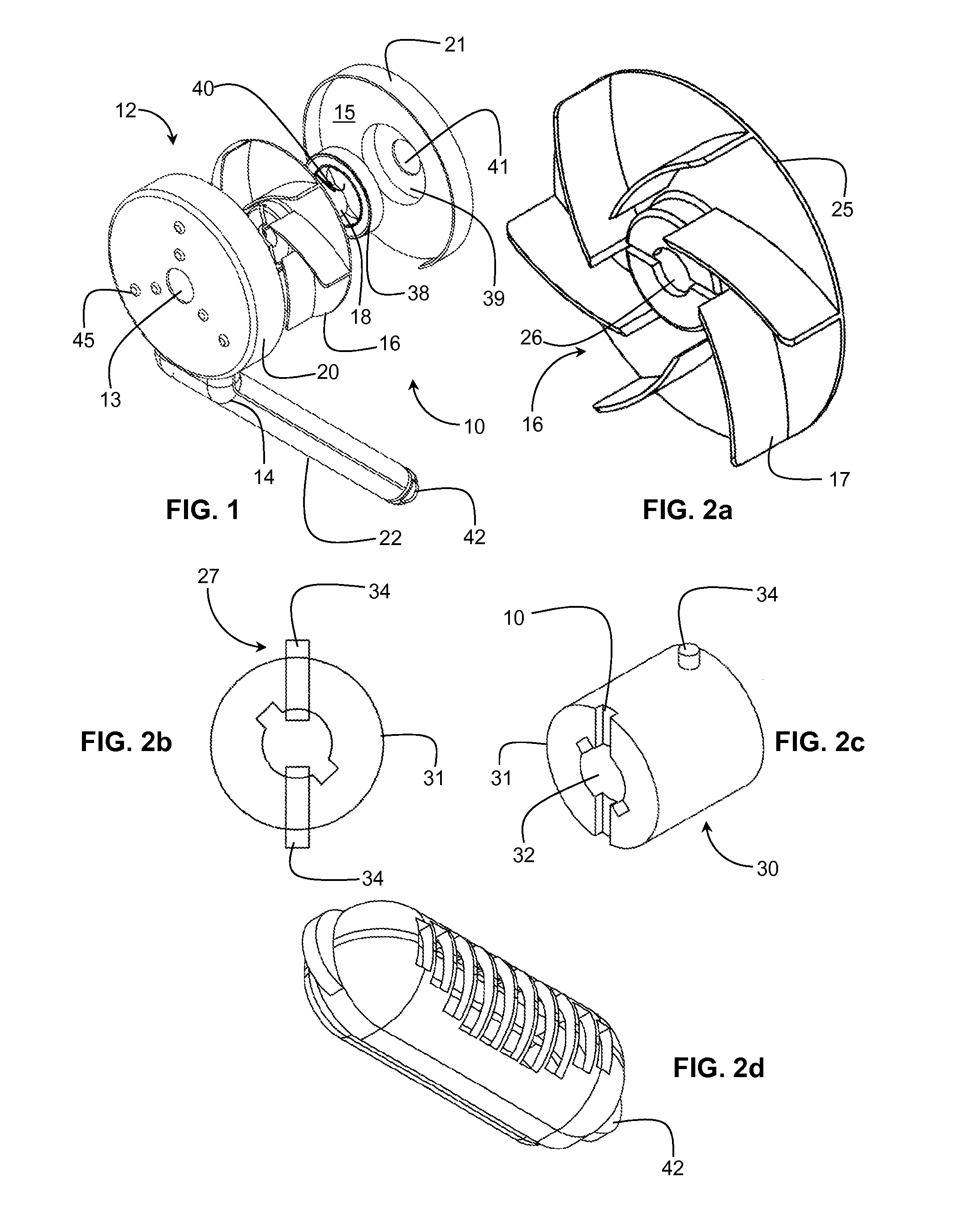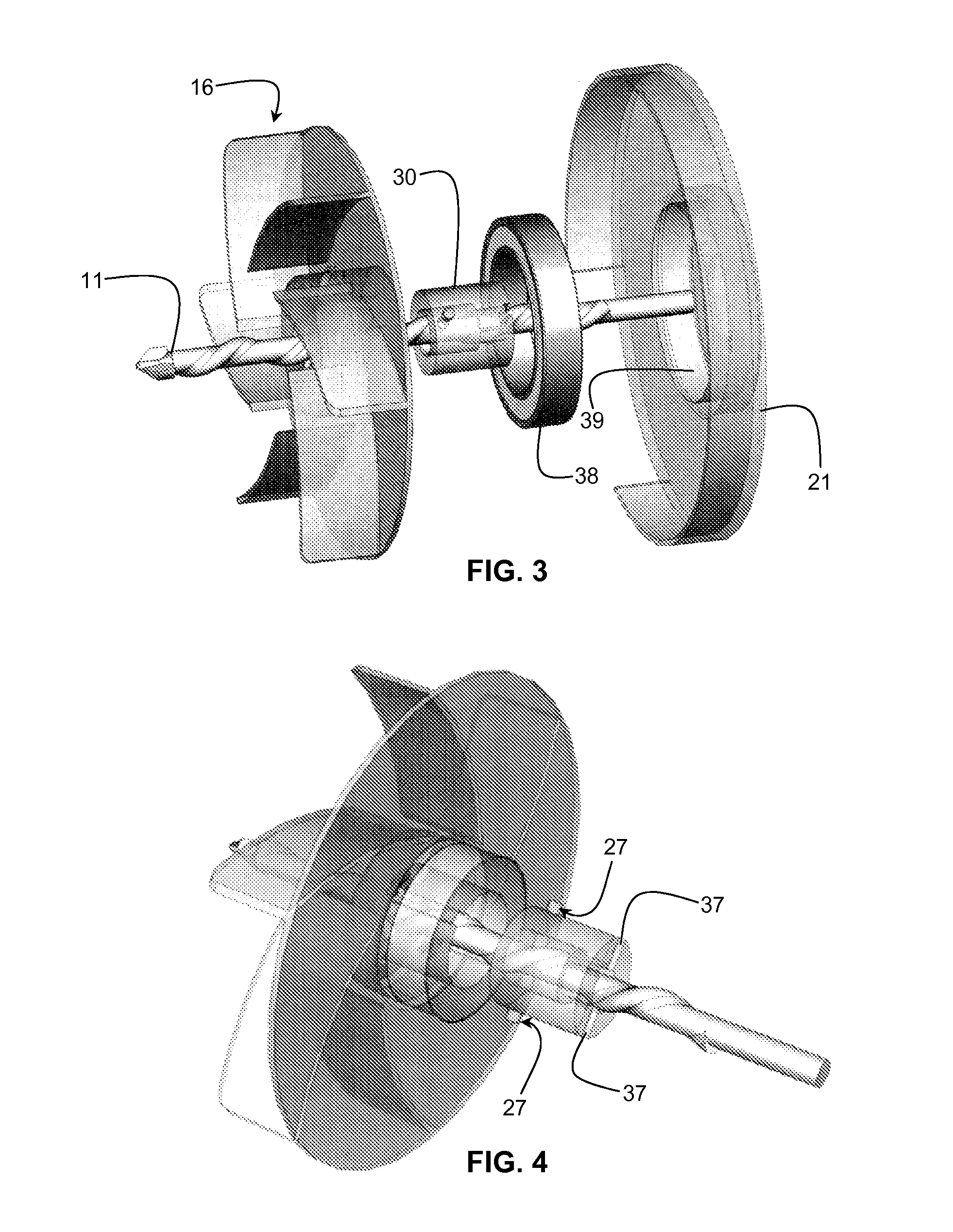Dust extraction device for a rotary power tool
a technology of cutting tool and extraction device, which is applied in the direction of material removal/addition, maintenance and safety accessories, climate sustainability, etc., can solve the problems of excluding the implementation of standard power tools, high impact on gravity, and inherent power alteration, so as to increase the suction efficiency and enhance the vacuum force. , the effect of easy attachment to existing drilling elements
- Summary
- Abstract
- Description
- Claims
- Application Information
AI Technical Summary
Benefits of technology
Problems solved by technology
Method used
Image
Examples
Embodiment Construction
[0033]In the following description of some embodiments, identical components that appear in more than one figure or that share similar functionality will be referenced by identical reference symbols.
[0034]With reference to the figures, there is shown a dust extraction device 10 for fitting directly on to an elongate drill bit 11 of a rotary power tool (not shown). The dust extraction device 10 comprises a casing 12 having an inlet 13 and an outlet 14 and defining an interior cavity 15, said inlet 13 and outlet 14 communicating with the interior cavity 15 for permitting air flow into the interior space from the inlet to the outlet. A fan element 16 has a plurality of impellers 17 radially attached to a central hub 18 that is adapted for rotation within and independent of the casing for inducing air flow within the casing from the inlet to the outlet when the fan element rotates. The hub 18 is adapted for engaging the drill bit 11 in a manner that permits rotation of the hub as well a...
PUM
| Property | Measurement | Unit |
|---|---|---|
| rotation | aaaaa | aaaaa |
| diameter | aaaaa | aaaaa |
| internal diameter | aaaaa | aaaaa |
Abstract
Description
Claims
Application Information
 Login to View More
Login to View More - R&D
- Intellectual Property
- Life Sciences
- Materials
- Tech Scout
- Unparalleled Data Quality
- Higher Quality Content
- 60% Fewer Hallucinations
Browse by: Latest US Patents, China's latest patents, Technical Efficacy Thesaurus, Application Domain, Technology Topic, Popular Technical Reports.
© 2025 PatSnap. All rights reserved.Legal|Privacy policy|Modern Slavery Act Transparency Statement|Sitemap|About US| Contact US: help@patsnap.com



